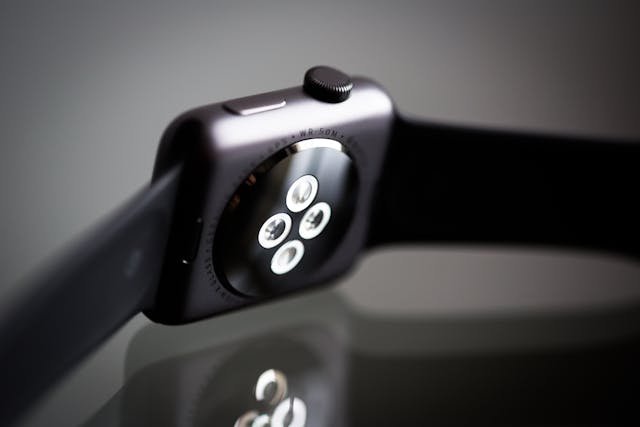
Gone are the days when managing a chronic health condition involved mountains of paperwork and a seemingly endless series of doctor appointments.
The healthcare landscape has experienced significant transformations in recent years, largely driven by technology. The surge in smart wearables and mobile glucose monitors exemplifies how tech has revolutionized patient care. From specialized medical devices to everyday smartwatches, these innovations empower both patients and healthcare providers with more data than ever.
The management of long-term chronic health issues has notably benefited from these advancements. In this article, we’ll explore how this sector of healthcare has transformed dramatically over the past few decades.
The Evolution of Wearable Health Technology
Wearable health technology has evolved far beyond basic step counters. Today’s devices feature advanced sensors (though their accuracy has been questioned recently) and algorithms capable of monitoring vital signs, identifying irregularities, and even predicting potential health complications before they escalate. These breakthroughs are particularly invaluable for patients managing chronic conditions such as diabetes, heart disease, and respiratory disorders.
While the proliferation of wearable devices has transformed chronic disease management, these tools are not meant to replace healthcare professionals like doctors, registered nurses, and nurse leaders who have completed programs from MSN to DNP. Rather, they are complementary tools that enhance care quality and support informed decision-making.
Transforming Patient Care Through Real-Time Monitoring
A key benefit of wearable health technology is its capability to provide continuous, real-time monitoring of vital health metrics.
For patients living with chronic conditions, this constant flow of data offers several advantages, including:
Immediate Detection of Health Changes
Wearable devices can promptly alert patients and healthcare professionals about changes in vital signs or other health parameters. For example, individuals with heart conditions can utilize devices that monitor heart rhythms and alert them to potential arrhythmias, allowing for timely medical intervention if needed.
Enhanced Self-Management
These devices encourage patients to play a more proactive role in managing their health. By providing immediate feedback on metrics such as physical activity and sleep patterns, wearables enable patients to make well-informed decisions regarding their daily habits and lifestyle.
Better Communication with Healthcare Providers
The data amassed by wearable devices creates a comprehensive health profile that healthcare providers can use to make better-informed treatment choices. This information facilitates a more complete understanding of the patient’s health status beyond clinical visits and enables providers to track trends over time, which can significantly inform treatment plans.
Impact on Specific Chronic Conditions
Diabetes Management
Continuous glucose monitors have revolutionized diabetes management by providing real-time blood sugar readings without the need for multiple finger pricks. These devices can forecast concerning blood sugar trends and alert patients before levels reach critical points.
Cardiovascular Disease
Modern wearables enable tracking of heart rate, blood pressure, and even basic ECG readings. This continuous observation allows patients and healthcare providers to discern patterns and warning signs of cardiovascular problems before they escalate into emergencies.
Respiratory Conditions
For individuals with asthma or COPD, wearable devices can monitor breathing patterns, air quality, and activity levels, equipping patients to better recognize their triggers and manage their conditions more effectively.
Looking to the Future
The realm of wearable health technology is advancing rapidly, with emerging innovations that include:
- Smart clothing embedded with sensors for more thorough health monitoring.
- Advanced algorithms designed to predict health events before they occur.
- Integration with artificial intelligence for more tailored health insights.
- Enhancements in battery life and the comfort of designs for extended wear.
Challenges and Considerations
While wearable health technology presents numerous benefits, it is important to address certain challenges:
- Concerns related to data privacy and security.
- The necessity of regular device maintenance and calibration.
- Ensuring the accuracy and reliability of measurements.
- Cost and accessibility challenges for some patients.
- The need for proper training for both patients and healthcare professionals.
As healthcare continues to progress, wearable technology will increasingly become integral to chronic disease management. However, these devices are most effective when embedded within a comprehensive care plan supervised by qualified healthcare practitioners. The synergy between innovative technology and skilled medicine forms a robust foundation for enhancing patient outcomes and overall quality of life.
With ongoing advancements in both technology and healthcare practices, the future of chronic disease management appears encouraging, bringing hope to millions of patients worldwide grappling with chronic conditions.






